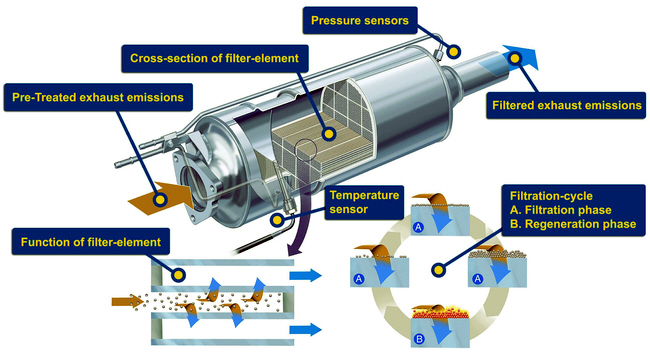Diesel Particulate Filters
If you own a diesel car, you probably have a diesel particulate filter, however, you may not know exactly what this is or how to maintain it. Diesel particulate filters have been fitted to diesel-fuel cars for almost two decades now – but if not maintained, or if tampered with there could be serious consequences for your car. Here we explain exactly what they are, what they do, why you need them and how to look after them.

Australia Wide Coverage

Experienced Vehicle Technicians

Same Day Service
Diesel Vehicles
What is a diesel particulate filter?
A diesel particulate filter (DPF) is a filter that captures and stores exhaust soot (some refer to them as soot traps) in order to reduce emissions from diesel cars. But because they only have a finite capacity, this trapped soot periodically has to be emptied or ‘burned off’ to regenerate the DPF. This regeneration process cleanly burns off the excess soot deposited in the filter, reducing the harmful exhaust emission and helps to prevent the tell-tale black smoke you used to see from diesel vehicles, particularly when accelerating.
Euro 5 exhaust emissions legislation introduced in 2009 to help lower car CO2 emissions effectively made DPFs mandatory, and since then, around one in two new cars a year have been diesel-powered.

What you need to know
Is it illegal to remove a diesel particulate filter?
How do I tell if my diesel particulate filter is blocked?
They usually look like this with a piped box that has dots in the middle, although they can slightly vary by manufacturer – check your handbook for more information.
What causes a diesel particulate filter blockage?
This is why car makers often go as far as recommending city-bound short-hop drivers choose a petrol car instead of diesel (and it’s why diesels are something of a rarity in the city car sector).
Other things that are bad for DPFs include poor servicing. A diesel particulate filter on a poorly serviced car may fail sooner than a well maintained one, generally, they should last for at least 100,000 kilometres. It’s important you use the right type of oil as well – some oils contain additives that can actually block filters. Performance modifications can damage a diesel particulate filter, as can using low-quality fuel and even running the car frequently on a low fuel level as the car may avoid DPF regeneration in order to save fuel.
What do I do if neither active nor passive regeneration work?
More damage can be caused this way and what could be an inexpensive fix can become something much more expensive.
Australian DPF Centre are experienced specialists in servicing and restoring your vehicles DPF (Diesel Particulate Filter). We provide a superior DPF cleaning service thanks to our state of the art ultrasonic and flash jet cleaners. Australian DPF Centre offer a range of service packages to suit all makes and models of cars, trucks, buses, motorhomes, light commercial, mining, machinery & marine.
How do I maintain a diesel particulate filter?
There are two types of regeneration: passive and active.
Active regeneration
Active regeneration means extra fuel is injected automatically, as part of the vehicle’s ECU, when a filter reaches a predetermined limit (normally about 45%) to raise the temperature of the exhaust and burn off the stored soot. Problems can occur, however, if the journey is too short, as the regeneration process may not complete fully. If this is the case the warning light will continue to show the filter is still partially blocked. In which case it should be possible to complete a regeneration cycle and clear the warning light by driving for 10 minutes or so at speeds greater than 40 km/h
You will know whether active regeneration is taking place by the following symptoms:
Engine note change
Cooling fans running
A slight increase in fuel consumption
Increased idle speed
Passive regeneration
However, not all drivers do this type of driving regularly – which is why manufacturers have designed an alternative form of regeneration.
